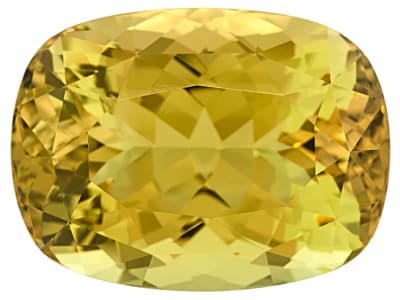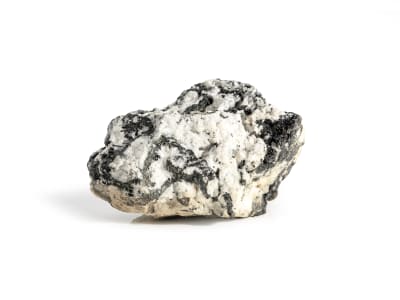Sanidine is a potassium-rich feldspar which is related to amazonite (microcline) and orthoclase by its chemistry. The name comes from the Greek sanis meaning “little plate” and idos that translates to “to see”. Specimens are not common and cutting grade material is hard to find. Carlsbad twining is common in mineral specimens. Sanidine gems that display adularescence, a mystical internal glow, are called moonstone. Colorless to yellow and pale brown gems have been found in Germany, Mexico, and Madagascar. Most larger gemstones come from Itrongay (Itrongahy), Madagascar.
General Information
LWUV: Inert to weak red-orange
Sanidine Colors
-
 Brown
Brown -
 Colorless
Colorless -
 Yellow
Yellow
Countries of Origin
Myanmar; Cameroon; Papua New Guinea; Angola; Paraguay; Portugal; Oman; Armenia; Greece; Austria; Mongolia; Mozambique; El Salvador; Morocco; Unknown; Brazil; Algeria; Cabo Verde; Chile; Lesotho; Argentina; Iran (Islamic Republic of); Hungary; Republic of Kosovo; Japan; Ukraine; Taiwan (Province of China); Bolivia (Plurinational State of); India; New Zealand; Canada; Vanuatu; Turkey; United States Minor Outlying Islands; Namibia; Comoros; Finland; Honduras; Italy; South Africa; Antarctica; Peru; Ethiopia; Germany; Yemen; Tanzania, United Republic Of; Afghanistan; Eritrea; Russian Federation; Viet Nam; Czechia; Guinea; United States of America; Egypt; Chad; Madagascar; Thailand; United Kingdom of Great Britain and Northern Ireland; Equatorial Guinea; Kiribati; Libya; Saudi Arabia; Sweden; Malawi; China; Poland; Slovakia; Bulgaria; France; Jordan; Serbia; Romania; Syrian Arab Republic; Niger; Sri Lanka; Uzbekistan; Kenya; Switzerland; Spain; Djibouti; Azerbaijan; Nicaragua; Congo (the Democratic Republic of the); Denmark; Mexico; Uganda; Australia; Estonia; Indonesia
Care
Sanidine is brittle so gentle handling is recommended. Avoid ultrasonic cleaners.

